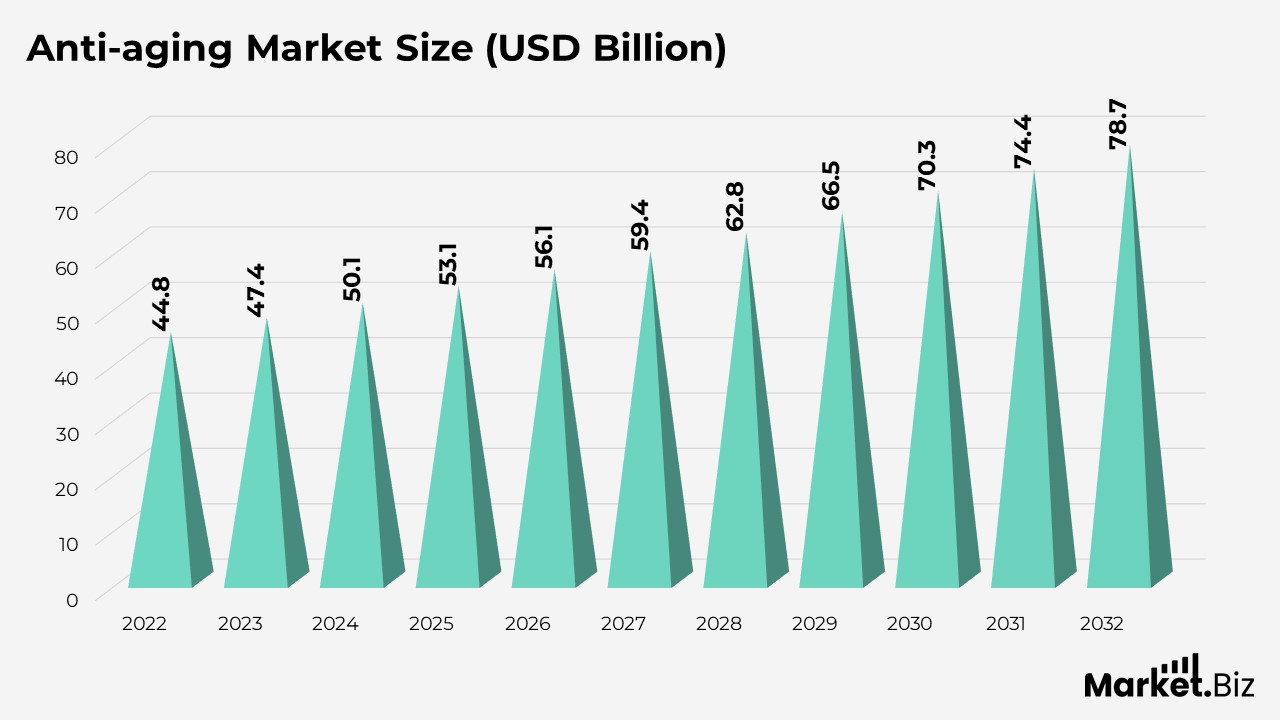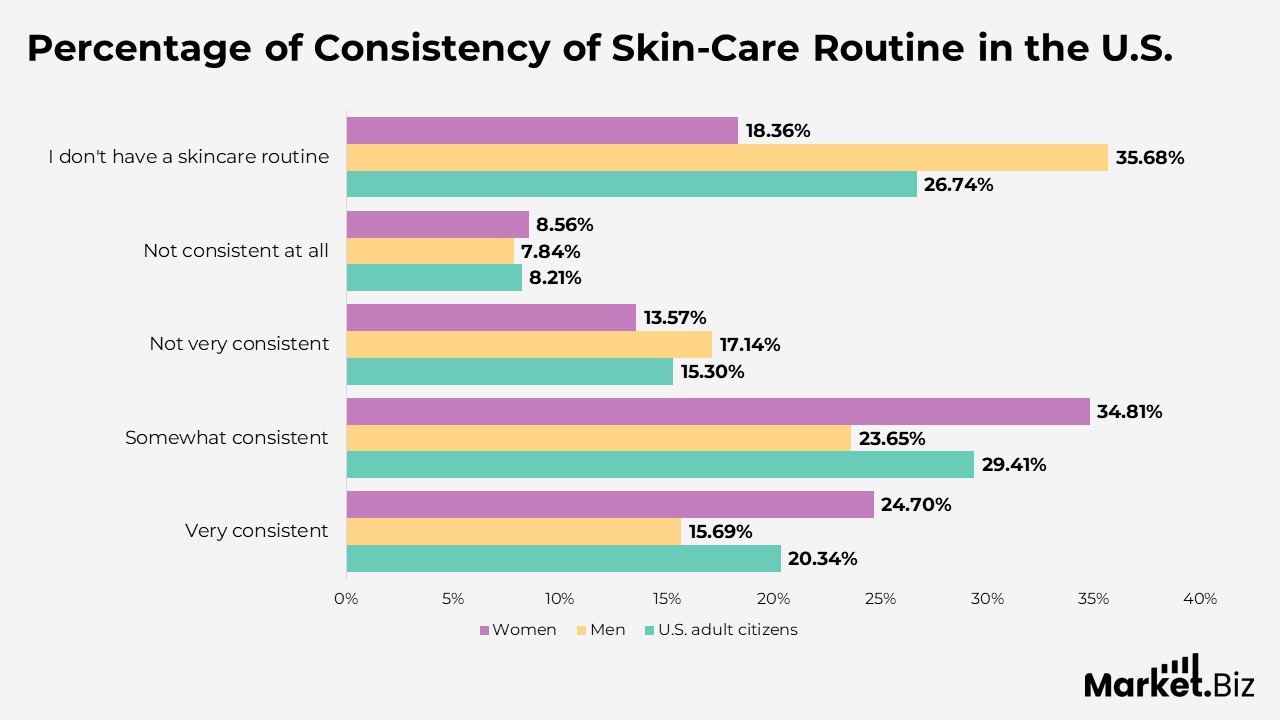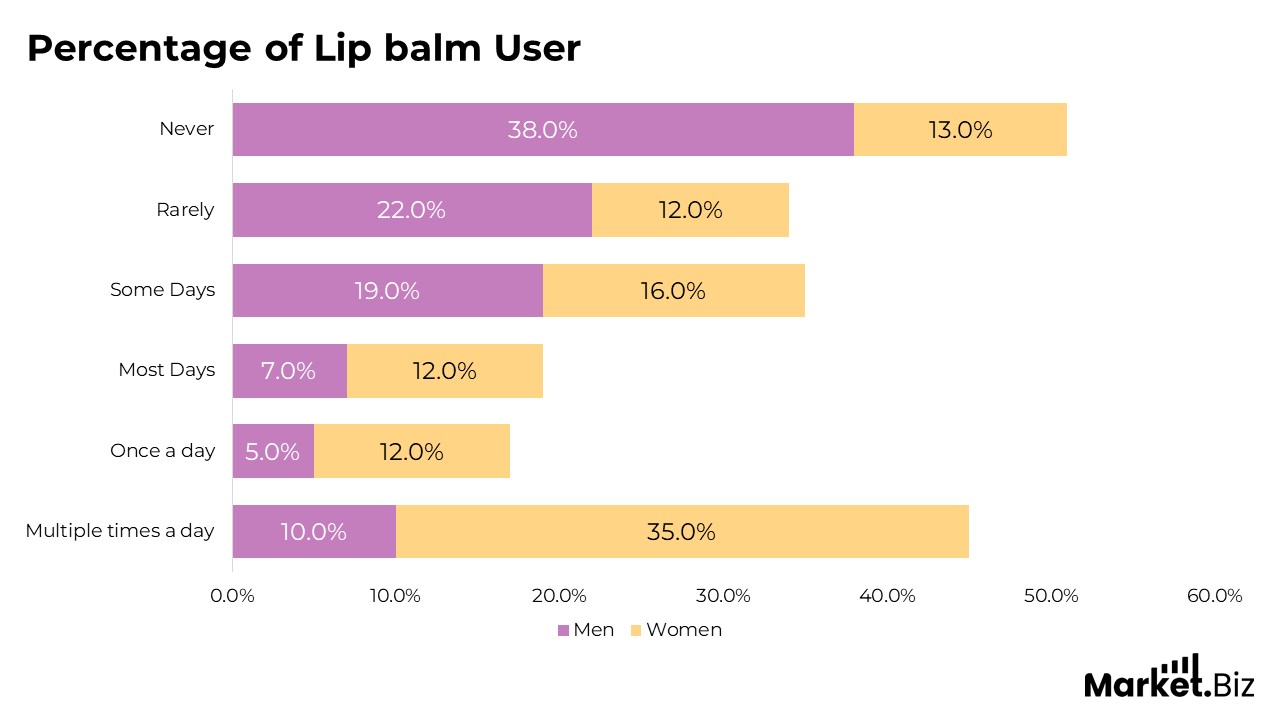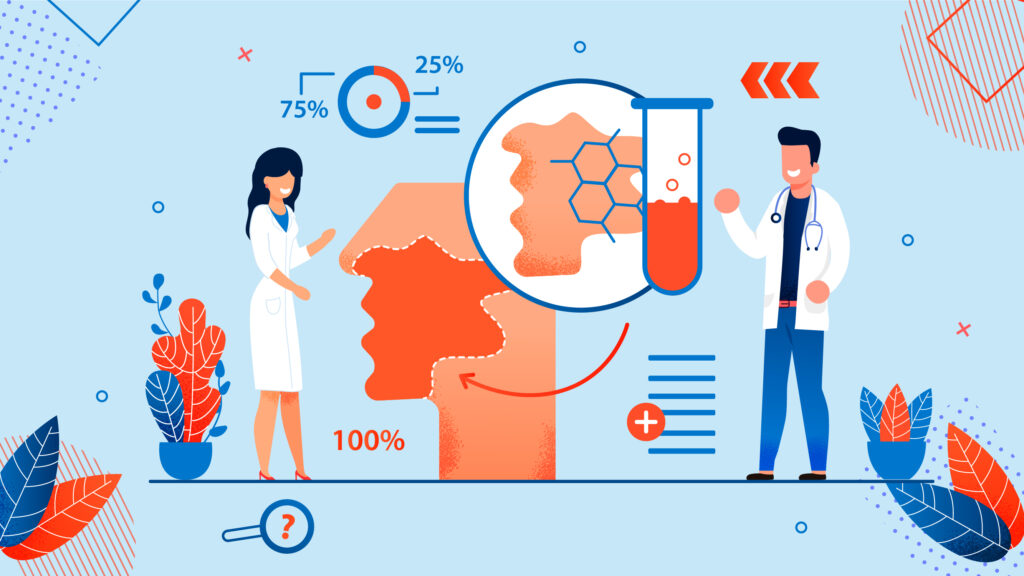Introduction
Anti-aging Statistics: Aging is a natural process. However, medical research and technology advancements have sparked a growing demand for anti-aging solutions. The global anti-aging market has seen significant growth, fueled by increasing interest in maintaining a youthful appearance and extending lifespan. Coupled with innovations in skincare and medical treatments.
As appearance becomes a higher priority, particularly in developed nations. The demand for skincare and personal care products continues to rise. Anti-aging approaches focus on various aging factors, including cellular deterioration, hormonal imbalances, and oxidative stress. Common strategies include skincare, exercise, nutrition, hormone replacement therapy, and emerging fields like genetic and regenerative medicine.
Editor’s Choice
- 86% of consumers prioritize price when purchasing anti-aging skincare products, highlighting its importance in their buying behavior. Price remains a key factor that often drives choices in this competitive market.
- An overwhelming 95.3% of consumers consider product quality the most crucial factor when selecting anti-aging products. This underlines the demand for effective, high-quality solutions that deliver tangible results.
- Ingredients such as retinol, hyaluronic acid, peptides, and antioxidants are in high demand due to their well-established efficacy in addressing signs of aging. These ingredients are known for improving skin texture, reducing wrinkles, and boosting collagen production.
- Moisturizers lead the way as the most frequently used skincare product, with a high usage rate of 93%. Cleansers follow closely at 85%, while sunscreens are also commonly used by 83% of consumers. Emphasizing the essential role of hydration, cleansing, and UV protection in daily skincare routines.
- A notable 66% of women recommend that younger generations start a skincare routine earlier in life. Emphasizing the importance of preventative care and establishing habits for long-term skin health.
- Around 74% of respondents, or approximately 3 in 4 people, maintain a morning and evening skincare routine. This reflects the growing commitment to consistent skincare practices that address skin needs throughout the day and night.
Anti-aging Market Size

- The global anti-aging products market is projected to grow from $53.1 billion in 2025 to $78.7 billion by 2032, with a CAGR of 5.8%.
- Growth is driven by increased skincare awareness, advancements in dermatology, and a growing aging population in developed regions.
- Anti-wrinkle treatments held over 27% market share in 2022, fueled by demand for minimally invasive and non-invasive solutions.
- Offline channels captured over 57% of the market in 2022, benefiting from the accessibility of specialty stores and supermarkets.
- Women accounted for 80% of the market in 2022, driven by high demand for anti-aging skincare products.
- Facial creams and lotions dominated with over 45% market share in 2022, valued for their effectiveness in reducing wrinkles and improving skin elasticity.
- Retinol held a 35% market share in 2022, praised for its ability to reduce fine lines and improve skin texture.
- The Asia Pacific region led the market in 2022 with a 43.5% market share, driven by cultural emphasis on skincare and youthful appearance.
(Source: Market. us)
Global Aging Population
The global aging population is growing due to advanced healthcare, increased life expectancy, and declining fertility rates, with advancements in medicine and improved living conditions leading to longer lifespans and fewer births.
- The global population aged 60 and older is projected to increase from 1 billion in 2020 to 1.4 billion by 2030 and double to 2.1 billion by 2050. Additionally, people aged 80 and above are expected to reach 426 million by 2050.
- In 2022, the global average life expectancy was 73.6 years, projected to rise to around 78.1 years by 2050, driven by reduced deaths from respiratory infections, cardiovascular diseases, tuberculosis, and maternal and neonatal complications.
- The U.S. population aged 65 and older is projected to grow by 47%, from 58 million in 2022 to 82 million by 2050. This increase, from 17% to 23% of the total population, is driven by healthcare advancements and longer life expectancies.
- In 2023, several persons aged 65 years and older were million in Canada.
- In 2024, the estimated population of the EU reached 449.3 million, with over one-fifth (21.6%) of people being 65 years or older.
- India, even though it has the largest youth population, is witnessing rapid progression in its aging demographic. In 2023, 153 million people aged 60 and above were in India. This number is expected to increase to 347 million by 2050.
- In China, the proportion of the population aged 60 and above is expected to increase from 17.8% in 2020 to 32% by 2040, while the fertility rate is projected to remain low.
- In 2022, Latin America and the Caribbean had 88.6 million people aged 60 and older, representing 13.4% of the population. By 2030, this proportion is expected to rise to 16.5%, driven by improved living standards and better healthcare access.
(Source: World Health Organization (WHO), Market.us, United Nations Population Fund (UNFPA), Population Reference Bureau, Government of Canada, European Union, Statista, Economic Commission for Latin America and the Caribbean (ECLAC))
Anti-Aging Skin Care Statistics

- Research indicates women are more likely than men to follow a consistent skincare routine, use a diverse range of products daily, and invest more in skincare products.
- 70% of women in the U.S. stated that they prioritize their skincare routines, with 64% using 1 to 4 anti-aging products daily as part of their regimen.
- Research has shown that women are more likely to spend more on skincare products, with 9% willing to spend over $60, compared to only 2% of men in the U.S.
- Skin concerns vary across age groups. Among adults, 30% and 60% focus on acne, whereas only 13% of those aged 30 and older share this concern. Wrinkles are a primary concern for 47% of Americans aged 65 and older, compared to 29% of younger adults.
- Despite concerns about aging, 76% of women aim to “embrace aging with grace,” though 54% worry about others noticing visible signs of aging.
- By age 40, common signs of aging include fine lines (44%), forehead wrinkles (32%), and age spots (32%), with 15% of women noticing creases or lines on their necks.
- The 2022 European Consumer Perception Study revealed that 72% of European consumers considered cosmetics and personal care products to be important or very important in their daily routines.
- 56% of German women faced multiple skin concerns, making their skincare routines closely linked to their sense of confidence and overall well-being in 2022.
- Japanese consumers were known for their sophisticated tastes, prioritizing product quality, safety, and effective, innovative ingredients while staying on top of fashion trends.
- In 2021, skincare products comprised 53% of the Japanese cosmetics market, with high demand for anti-aging, brightening, moisturizing, and eye zone care products influenced by the COVID-19 pandemic.
(Source: Cosmetics Design North America, The Personal Care Association, Mintel, International Trade Administration)
What are the components of a skincare routine?

- Lip balm is the most frequently used skincare product, with 35% of women and 10% of men using it multiple times daily.
- The cleanser is commonly used, with 7% of men applying it multiple times daily and 10% using it once daily.
- Among women, 19% use cleanser multiple times daily, and 24% use it once daily.
- 17% of men and 46% of women use moisturizer at least once daily.
(Source: YouGov PLC)
U.S. Anti-Aging Demographics
Age
- Anti-aging products are particularly popular among women aged 55 and older, with 47% of women in this age group in the U.S. using such products.
- In 2022, 39% of women in the U.S. aged 45 to 54 used anti-aging products.
- Approximately 32% of women aged 35 to 44 in the U.S. used anti-aging products at least once yearly.
- Around 26% of women aged 25 to 34 in the U.S. incorporated anti-aging products into their routine.
- Only 19% of women aged 18 to 24 in the U.S. reported using anti-aging products.
(Source: Mintel, Statista)
Purchasing Habits
- Dermatologist recommendations play a role in the purchasing decisions of 57.9% of consumers.
- Around 58% of skincare users prefer purchasing products from stores, whereas 42% shop online.
- Research shows that 63% of users buy skincare products once a month.
(Source: Statista, Mintel)
Anti-Aging Skincare Buying Decision Factors
This analysis highlights the various factors influencing the demand for skincare products.
- Brand or company reputation influences 70.1% of consumers’ buying decisions.
- Product quality is the most important consideration, affecting 95.3% of respondents.
- Attractive packaging and presentation impact 45.8% of consumers.
- Only 23.4% of respondents are influenced by brand ambassadors and celebrities.
- Social media influences the purchasing decisions of 62.6% of respondents.
- Weather or climate affects 63.6% of respondents’ skincare product choices.
- Previous experiences with a product influence 91.6% of consumers’ decisions.
(Source: International Journal for Multidisciplinary Research)
Anti-Aging & Plastic Surgery Statistics
Plastic surgery has recently seen a significant rise in popularity globally, with millions opting for procedures annually.
- According to the American Society of Plastic Surgeons, over 26.2 million cosmetic procedures were conducted in the U.S. in 2022 alone. Plastic surgery plays a crucial role in the anti-aging market by offering surgical solutions to enhance or rejuvenate specific face and body areas.
- In 2022, 10% of individuals in the U.K. underwent cosmetic surgery.
- Cosmetic surgery in Australia has experienced significant growth, with over $1 billion spent annually on more than 500,000 procedures. In 2022, Australia was the leading country per capita for cosmetic procedures, surpassing even the U.S.
(Source: American Society of Plastic Surgeons, Happiful, Australasian College of Cosmetic Surgery & Medicine)
K-Beauty Popularity Worldwide
K-Beauty, or Korean beauty, has become globally popular thanks to its innovative products and multi-step skincare routines. Renowned for their use of natural ingredients and cutting-edge formulations, K-Beauty products aim to promote healthy, glowing skin. This trend has quickly expanded beyond Korea, attracting skincare enthusiasts worldwide. The growing export of Korean beauty products continues to boost their worldwide popularity.
As per a 2023 survey on the global popularity of South Korean beauty products,
- In 2023, 24.1% of survey respondents noted that Korean beauty products were widely popular among the general public.
- Another 24.6% observed that K-beauty was popular, with related products actively promoted in their regions.
- The popularity of Korean beauty products was particularly high in India and the UAE.
- In India, 57.1% of consumers exposed to South Korean cultural content in 2023 recognized K-beauty as popular, reflecting an increase from 53.7% the previous year.
- Over recent years, K-beauty has experienced consistent growth in popularity in India, with no indication of a decline in consumer interest.
(Source: Statista)
Top Key Players
L’Oréal S.A.
- L’Oréal is a leading global brand in beauty and cosmetics, offering skincare products through brands like L’Oréal Paris, Lancôme, and Vichy, focusing on anti-aging solutions.
- In 2024, L’Oréal’s skincare and cosmetics division reported €43.48 billion ($47.04 billion) in revenue.
- L’Oréal held a 14% share of the global market in 2022.
- The company specializes in skincare, hair care, makeup, hair colorants, and perfumes, contributing nearly 12% of global cosmetic sales in 2022.
(Source: L’Oréal Annual Report, Statista )
NIVEA
- NIVEA, a brand under Beiersdorf AG, is internationally renowned for its skincare products.
- In the fiscal year 2024, Estée Lauder Companies reported net sales of €9.85 billion ($ 10.66 billion), which includes various brands under its portfolio, including Estée Lauder, Clinique, La Mer, and others.
- Most of the company’s sales were generated in Europe, the Middle East, and Africa, with skincare and makeup being the most profitable product categories.
- In contrast, fragrance and hair care products accounted for approximately 20% of net sales.
(Source: Beiersdorf Annual Report, Statista)
Estée Lauder Companies Inc
- Estée Lauder is a renowned beauty and skincare brand offering luxury anti-aging solutions through various brands.
- Clinique, one of the top brands under Estée Lauder, was valued at approximately $4.8 billion in 2023.
- In 2022, Estée Lauder reported around $17.7 billion in revenue, showcasing impressive growth.
(Source: Estée Lauder Annual Report, Statista)
Neutrogena Corporation
- Neutrogena is a well-known skincare brand offering a diverse range of products.
- Neutrogena, a brand owned by Johnson & Johnson, is part of the global healthcare conglomerate.
- In 2024, Johnson & Johnson reported $54.7 billion in total sales, spanning multiple product categories.
(Source: Johnson & Johnson Annual Report, Statista)
Olay
- Olay, a renowned skincare brand, is owned by Procter & Gamble (P&G).
- In 2024, P&G generated $15.2 billion in net sales from its beauty segment, which includes multiple brands like Olay.
- In 2022, Procter & Gamble allocated $208 million to promote its Olay brand in the U.S.
(Source: Procter & Gamble Annual Report, Statista)
Recent Developments
New Product Launches
- In August 2024, Purple Pompa Beauty Culture Private Limited, an Indian skincare brand, introduced its groundbreaking “Age Balance” line. This innovative approach blends natural aging with skin rejuvenation, providing a unique alternative to conventional anti-aging products.
- In April 2024, French cosmetic brand Nuxe Paris unveiled Nuxuriance Ultra Alfa, a new collection of six products featuring advanced green technology to address the signs of aging skin.
Acquisitions
- In January 2024, Bridgepoint Group plc acquired RoC Skincare from Gryphon Investors to enhance its portfolio in the expanding skincare market and capitalize on RoC’s strong anti-aging brand presence.
- In September 2022, L’Oréal S.A. acquired Skinbetter Science, a U.S.-based physician-dispensed skincare brand, to strengthen its dermatological beauty business in North America.
Regulatory Landscape
- Regulatory authorities have established guidelines for the safety and effectiveness of cosmetic products, ensuring compliance with quality standards and safeguarding consumer interests in the anti-aging skincare market.
Conclusion
Anti-aging Statistics The analysis of anti-aging statistics highlights a growing global focus on longevity, skincare, and wellness solutions aimed at slowing the visible and biological effects of aging. With advancements in medical research, skincare technologies, and lifestyle adjustments, individuals increasingly prioritize preventive and corrective measures to preserve youthful appearances and overall health.
Market trends show a rising demand for anti-aging products, treatments, and procedures, driven by an aging population and heightened consumer awareness. While these solutions show promising results, evaluating their effectiveness, safety, and long-term impacts is important. Ongoing research and ethical considerations will be key in shaping the industry’s future and ensuring that anti-aging solutions remain accessible and responsibly offered to all.
FAQ’s
Anti-aging is a scientific field focused on medical interventions aimed at slowing, preventing, or reversing the effects associated with aging.
The most popular anti-aging products include creams, serums, masks, and targeted treatments, with skincare being the leading and most profitable category in the beauty and cosmetics industry.
Cosmetic procedures like dermal fillers and Botox injections can be effective and safe when administered by skilled and qualified professionals. However, all procedures involve risks, so it is crucial to consult with a board-certified plastic surgeon or dermatologist to assess the treatment’s potential risks, benefits, and appropriateness.
